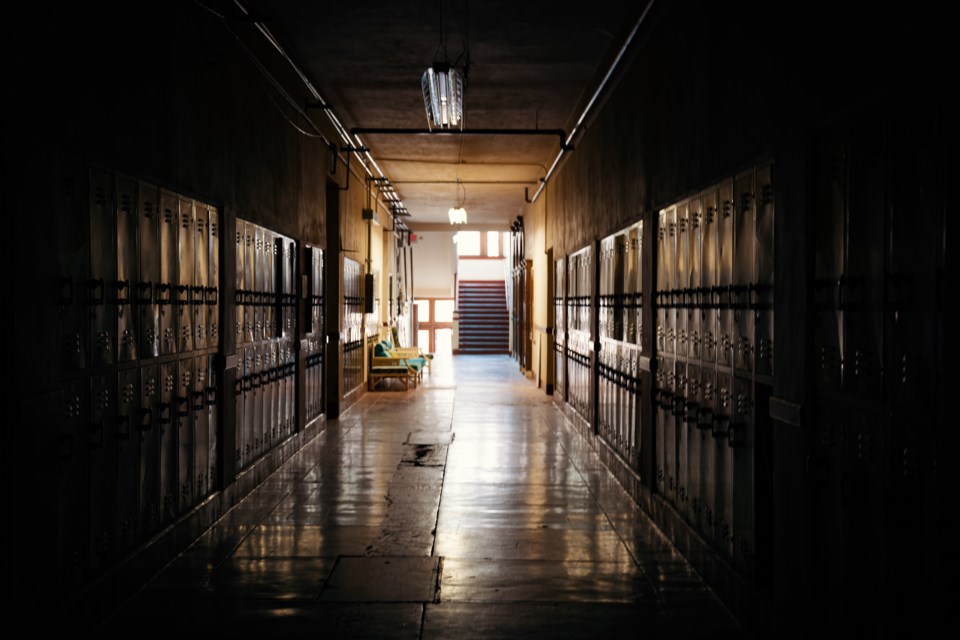Violence is down in Simcoe County public schools, according to new data from the Simcoe County District School Board (SCDSB).
At their program standing committee meeting on Nov. 13, trustees got a look at the board’s most recent safe schools report, which outlines the number of violent incidents experienced in schools in the 2023-24 school year. In the 2023-24 school year, the board is reporting 128 violent incidents, down from 159 the previous year.
“That’s a pretty substantial decrease. I know there had been an increase coming out of the pandemic and there were a lot of pieces to that pie,” said Orillia/Severn/Ramara trustee Jodi Lloyd. “Our number of students is increasing, but the frequency of incidents is decreasing.
“To me, it’s a significant positive,” she added.
Since 2011, school boards across Ontario have been required to report violent incidents to the Ministry of Education annually.
The province defines violent incidents as possessing a weapon (including possessing a firearm), physical assault causing bodily harm requiring medical attention, sexual assault, robbery, using a weapon to cause or to threaten bodily harm to another person, extortion and hate/bias-motivated occurrences.
According to the SCDSB, violent incidents can also include incidents where no one was harmed or required medical attention. Those incidents may still be dealt with by school administration through suspension, detention or expulsion, but are not required to be reported to the province and were not included in this report.
Under the Criminal Code of Canada, assault is defined as the intentional application of force without consent, attempting or threatening to apply force, or accosting or impeding another person while openly carrying a weapon or an imitation thereof. Extortion, hate- or bias-motivated occurrences and threats bodily harm may not rise to a level of "violence" under the code.
Representatives from Simcoe County teachers' unions have questioned the violent incident numbers, suggesting the numbers are skewed based on the way the province and board define violent incidents.
Last year, Collingwood/Wasaga Beach trustee Mike Foley put forward a motion in 2023 to require the board to provide information publicly on violent incidents through a yearly report to trustees moving forward, which was passed at that time.
According to the report presented last year, there were 159 violent incidents in the 2022-23 school year in Simcoe County public schools, which was up from 122 violent incidents reported by the board to Village Media in the 2021-22 school year.
Last year, the board provided trustees of a breakdown by type of incident in their report, however they did not do the same this year.
Also last year, the 159 violent incidents reported by the board to the Ministry of Education were broken down to 68 incidents of possessing a weapon including a firearm, 49 physical assaults requiring medical attention, 19 hate- and bias-motivated occurrences and 21 incidents where a weapon was used to cause bodily harm.
The board did provide a breakdown of where the incidents occurred this year: 13 per cent occurred off-site, 17 per cent in elementary schools and 83 per cent in secondary schools.
New this year, the board provided some data on violence specifically against school staff. The board says that data showed an overall decrease of 13 per cent in the number of these types of incidents from the 2022-23 school year to the 2023-24 school year.
During Wednesday’s meeting, superintendent of education Scott Young said he believes some of the contributing factors to the decrease include work on progressive discipline practices within the board, and connecting with School Mental Health Ontario.
“I see a lot of combined efforts,” he said.
Superintendent of student achievement Dean Maltby said the board has worked on their own foundational knowledge on mental health both for students and staff. He said the child and youth workers that work out of elementary schools have been given a revamped purpose and more implementation supports.
This past summer, trustees received the results of the 2023-24 school climate survey, which found that about 23 per cent of elementary school students and 32 of high school students in schools don’t feel safe at school.
While a representative from the Simcoe County Ontario Secondary School Teacher’s Federation said then that violent incidents definitely play a role in why students aren’t feeling as safe, the board currently does not ask students who answer that they don’t feel safe why that might be, so the board has no concrete data to either support or refute that claim.
But possibly not for long.
At a board meeting in October, Foley put forward a notice of motion calling on the board to improve the school climate survey by adding the following questions for students:
- Describe what makes you feel unsafe at school.
- Describe what makes you feel safe at school.
- Share your thoughts and ideas on how the SCDSB can make you feel safer at school.
The board will vote on that motion at their Nov. 27 meeting.



